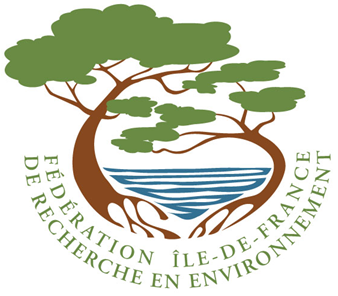LSCE is a large laboratory that pulls together personnels from CEA, CNRS and the Versailles-St-Quentin University. It is located on the campuses of both the CEA-Orme des Merisiers and CNRS-Gif sur Yvette. It is part of the Institut Pierre Simon Laplace that optimizes the work of several laboratories in the Paris area working in similar themes. There are about 300 people working at LSCE, 150 of which hold permanent positions and several tens are working on a PhD.
Since January 2015, LSCE is organized around 3 main scientific themes that regroup 4 to 7 teams working on similar subjects or with the same tools:
- Archives and tracers
- Biogeochemical cycles and transfers in the environment
- Climate and cycles. Modeling the variability and their interactions
The LSCE scientific activity is made possible thanks to the work of the support teams (Administration, Computing, security/infrastructures)
Archives & Tracers
The aim of work carried out by this group is to understand the dynamics and the natural variability of climate and to evaluate the sensitivity of marine and continental environments to climatic and anthropogenic changes. To understand the natural variability of climate, knowing the magnitude and frequency of past changes is a key step. To look back at the past makes it possible to get away from human disturbance. In these conditions, reconstruct past changes helps us to understand the functioning of the complex climate system and to identify and quantify interactions and fluxes between the different climatic system components: atmosphere, ocean, ice and continent. Study of past climate changes and of their impact on ecosystems tells us how the climate system responds to known perturbations (orbital and volcanic). The produced data provides a benchmark to test the ability of Earth System Model to correctly represent these mechanisms, the magnitude and dynamics of past changes.
Biogeochemical Cycles and Transfers in the Environment
The objective of this topic is to understand the dynamics of the land biogeochemical cycles, including the carbon cycle. To achieve this objective, the transport of substances by erosion and the atmospheric sources of greenhouse gases, aerosols and biogenic organic compounds are addressed. Long-lived greenhouse gases impose very high accuracy in measuring atmospheric composition because the concentration gradients are very low compared to background concentrations, even on a global scale. In addition to its analytical competence for greenhouse gases (European ICOS network), the theme is internationally recognized for modeling and mapping of surface fluxes from these atmospheric measurements. Expertise in the remote sensing measurement of greenhouse gases and the characteristics of terrestrial surfaces makes it possible to exploit the existing data of the GOSAT and IASI missions and to prepare future dedicated satellite missions. The study of aerosols and short-lived reactive gases is based on regional and local atmospheric measurements, particularly in the unpolluted atmosphere (sub-Antarctic zone, Mediterranean zone) and the Paris region characterized by atmospheric pollution generated by very diverse sources. To fully understand the impacts of anthropogenic and climatic changes, it is important to model the functioning of the terrestrial eco-hydro-systems using an integrative data-model approach.
Climate and Cycles: Modeling their variability and interactions
Numerical simulation (modelling) is a major specialty of the LSCE since it was created. Initially, modelling approach was conducted by paleoclimatologists (thematic: Archives and tracers), who investigate relatively long periods of time (from hundred to several hundreds of millions years), and also by biogeochemists (theme Biogeochemical cycles and Transfers in the Environment) dealing with shorter timescales. Since 2010, climate modelers are gathered in a single thematic group. They work on interactions between climate and cycles, and investigate various periods of time. Modelling researches are closely connected to observations activities conducted at the LSCE, for reconstructing past climates, as well as for monitoring atmospheric composition and fluxes between the atmosphere and land and ocean surfaces.
Each of these three themes gathers four to seven teams. Among them, the team Geochemistry of the impacts –GEDI- is particularly involved in the FR-FIRE, while some others are more closely linked to the FR-IPSL.
The GEDI team (l’équipe de GEochimie Des Impacts) uses geochemistry (e.g. stable and radioactive isotopes, elemental composition) to investigate the impact of human activities on material transfers (e.g. sediment and soil particles along with contaminants/chemicals associated with these particles). Many nutrients and pollutants are strongly bound to fine particulate material. Therefore, it is important to understand material mobilization, transport, and storage within watersheds and oceanic water columns. Our research focuses on soil erosion, contamination of rivers, streams and watersheds; the fundamental transfer pathways of materials to the ocean.
The common theme of our team’s research is the development of novel tracing techniques to understand these fundamental transfer processes as well as quantify material flows. Our team samples contemporary soil, atmospheric deposition and suspended material. Further, we sample sediment cores from floodplains and lakes, in order to reconstruct the historical evolution of material transfers over time.
The GEDI team investigates stable and radioactive isotopic tracers along with major and trace elements in these samples with a wide range of analytical techniques such as ICP-MS, MC-ICP-MS and gamma spectrometry. Through these analyses, our team contributes significantly to the development of novel tracing approaches (e.g. U, Pa, Th, Sr, and their isotopes with the use of multi-collection mass spectrometry) necessary to thoroughly understand transfer processes. Accordingly, our facilities offer students and researchers access to multiple laboratories (including a clean room) and multiple analyses.
Our team conducts field work in different environments in France and around the world (e.g. Brazil, Mexico, Laos, Japan, France, New Caledonia) in order to improve our understanding of the material transfer processes. Accordingly, the GEDI team is involved in many national (e.g. ANR STREAMS, AGRIPED and TECITEASY) and international projects (e.g. Franco-Japanese collaboration following the Fukushima accident) as well as being an important contributor to local the PIREN-Seine program (devoted to understanding transfer dynamics in the Seine River basin) since its inception (1989).

